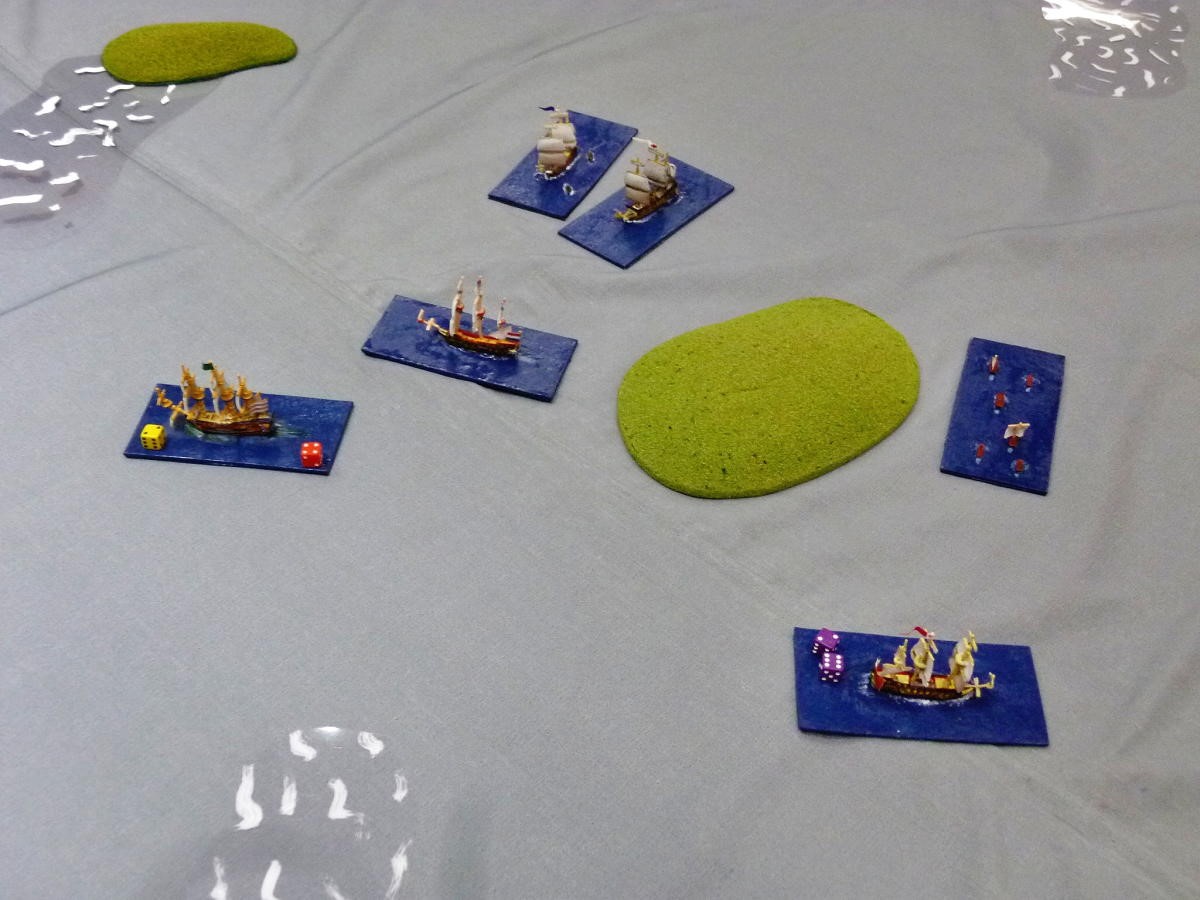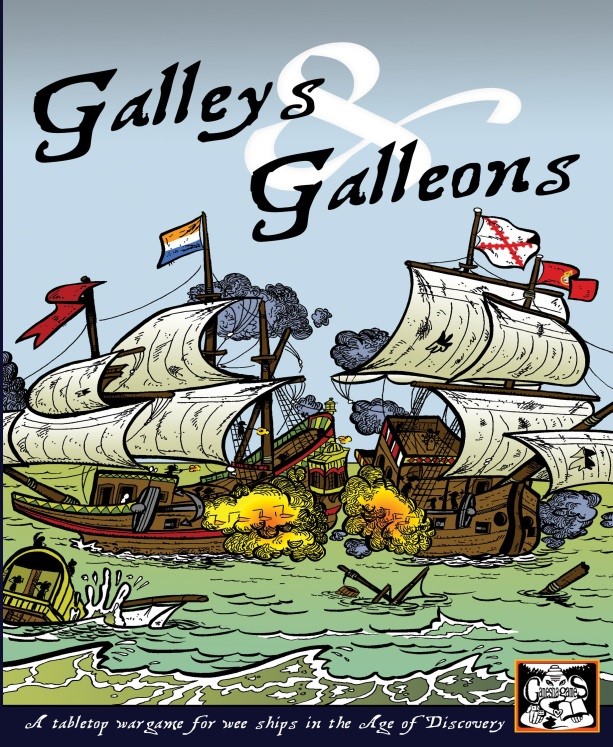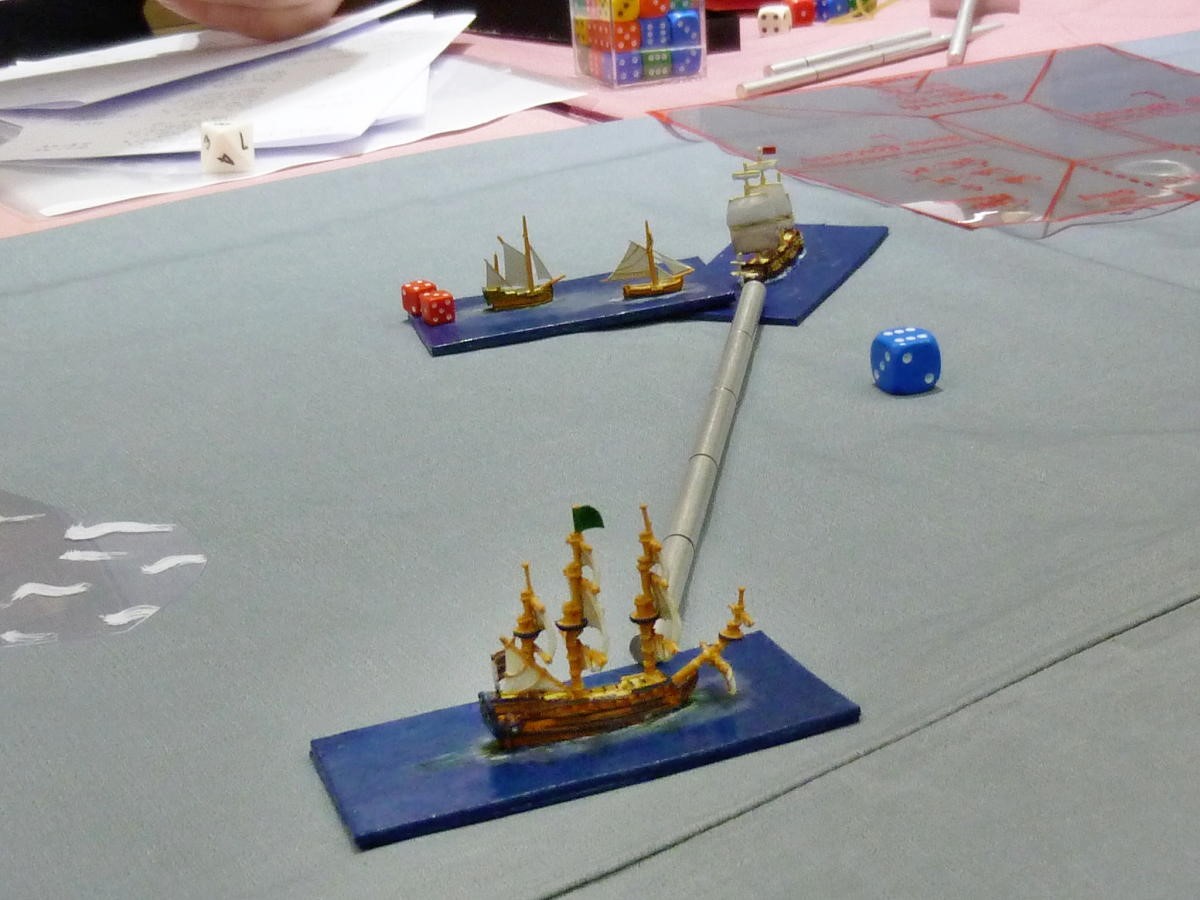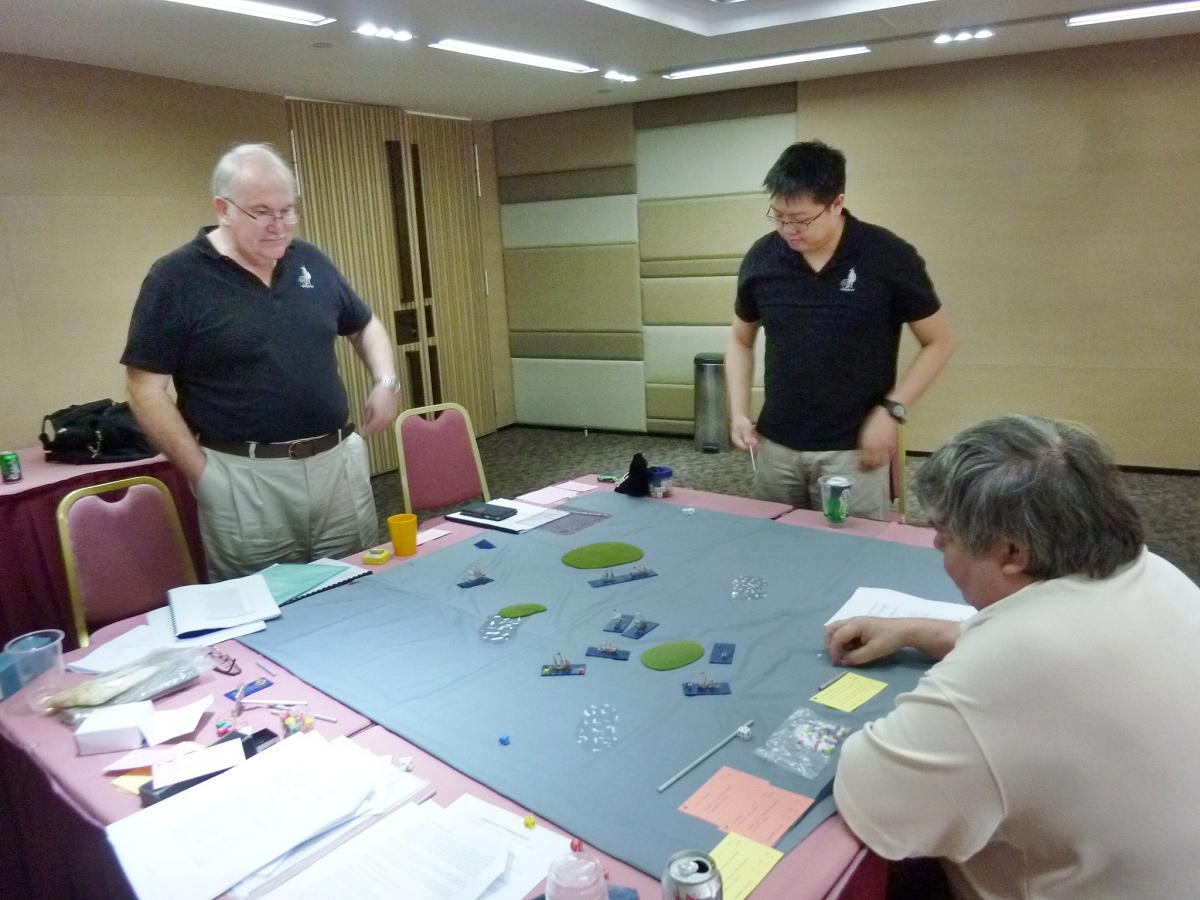|
|
|||||||||
|
|
Swiving at Sea
Ganesha Games’ Galleys and Galleons Rules
and
My DBArrrrrgggghhhh Amendments for them
By Peter Hunt
My playmate Jeff and I are probably men born out of time. Not for us the technological connectivity of the Internet age, and cyber wars. No, if given the choice we would prefer the more intimate and morally looser connectivity of Restoration England, and the wars of the late 17th Century. This comes, I think, from us at a young and hormonally impressionable age in 1971 watching Susan Hampshire in her prime vamping her way through “The First Churchills” in her inimitable style. Whatever the reason we find an afternoon “swiving” always well spent: DBR is a fine set of rules; the period is full of charm and interest; the games and the in-period historically accurate dissolute behaviour they engender are great fun; and it doesn’t matter if you win or lose as you can go home to your splendid country estate full of tapestries, and so convenient for the Bicester outlet shopping village, where your good lady will later confide to her chum that: “His Grace returned from the wars today and pleasured me twice in his top-boots.” Well, that’s what we would like to think anyway…
To go with the armies of King James and the Duke of Monmouth I have long
had their navies in 1:1200 scale based for DBR use. Once in a blue
moon they might actually get on the table, but most of the time they
don’t get out of their box, and Jeff’s fleet for William of Orange never
got off the building ways. This seemed a bit of a waste to me and
for many years I have tinkered with ideas of how to use them.
First there was “De Bellis Bataviae” (“The Dutch Wars”) which just used
the DBR system with a greater variation of ships, this was not very
satisfying. It spun into “Spice, Gold and Powder” which had more
stress on the nautical aspects, and attempted to cover everything from
the Spanish Armada to the War of The Spanish Succession. This got
too big, with 30 types of vessels with eight characteristics each! So,
the little ships stayed in their box.
Then in July Ganesha
Games published a set of rules for the period called “Galleys
and Galleons” written by Nicholas Wright. Fellow swiver
Frankie uses Ganesha’s “Song
of Drums and Shakos” for Napoleonic Skirmish, and I have always
rather liked them. The key to the rules is an activation system
where your individual men or units can opt to attempt up to three tasks
or “activations” a turn, and to succeed you must equal or exceed their
quality level on a D6. So if their quality level is 4 and you
wanted to try to do three things you would throw three dice and you
could do one action for each successful 4, 5 or 6. If you succeed
you may activate another of your men or units, but the rub is that if
you throw two fails the initiative passes to your opponent, perhaps
leaving a lot of your own men doing nothing, this is called a
“turnover”. Thus you only have yourself to blame… you can play
conservatively and have each chap only do one thing, that way it doesn’t
matter if he succeeds or fails, as with only one fail you still retain
the initiative and can activate your other chaps, but if you try to do
two or three actions there is a chance you will come unstuck and
turnover the initiative. The combat system is basically DBx, men
or units have a combat factor, you make an opposed dice throw, add in
the combat factor and tactical factors, and the more you outscore your
opponent the more unpleasant it is for him, or vice versa. Since I
knew that the DBx combat system would work in the naval context, US$8
seemed a small investment to see if the rest of the rules would work
too.
It turned out to be money well spent… and a substantial financial
outlay. Money well spent because the rules are very good, and a
substantial financial outlay, because with my enthusiasm for the period
rekindled, orders immediately went off to Navwar and Langton for a lot
more new ships, Brigade Models for buildings and fortifications, and
Minibits for dice holders. In the meantime a week’s work finally got a
Dutch fleet to sea.
The rules run to 78 pages and are well written, in a “tongue in cheek”
manner that is clearly aiming at a fun game rather than a deep
historical simulation, of which the presence of Kraken to drag you down
into the deep, Leviathans to pursue o’er the Seven Seas, Rocs to descend
on you from the skies, and an Edge of the World to fall off, leaves you
in no doubt. Don’t be put off if that is not your cup of tea
though; there is a good set of rules here that will serve well for
historical games. Almost all the aspects of the Ganesha Games’
system are here, including using short, medium and long measurement
sticks to govern movement and shooting ranges, and using multiple
actions to make your shooting and fighting more effective, (for example
a “full broadside” in Galleys and Galleons is the equivalent of an
“aimed shot” in Drums and Shakos.) Movement is a bit different
because it is tied to the wind as you would expect in an age of sail
naval game and this is nicely handled by cross referencing the vessel’s
rig to wind aspect which will give you a speed in terms of the short,
medium or long measurement that the ship will move regardless of whether
it is ordered to do so or if there is a turnover. Each ship can
take up to three hits before it is crippled but, because it is harder to
score hits on bigger ships unless you have a big ship yourself, this
does not mean that all ships are equal. As damage mounts the
effect of additional hits is nicely incorporated into all sorts of
unpleasant situations a ship can find itself in, and also into command
failures. Finally this wouldn’t be a set of naval rules if it
didn’t have a critical hit table too. Characteristics for 36 types
of vessel, three types of shore defences and 11 monsters are provided
and the algorithm and points values for customizing your own ships is
explained and simple to use.
Adding the DBR aspects seemed to be a natural
marriage for Galleys and Galleons. The bases are a bit big but
that means that the ships are well protected from rough handling and the
base length of 80mm nicely equates to a “short” distance under the
rules, with medium and long distances using DBx measuring sticks
correspondingly longer in the same proportion as in the original rules.
This makes movement simple and the nice rectangular base makes
determining wind aspect a lot easier. We simplified the wind
direction and change rules by only using half as many compass points and
one-third the frequency of changes, (but changing by 45o
instead of 22.5o), and I produced a little tool to make
turning and determining arcs of fire easier.
The only thing really lacking from the rules was the kind of “group move” that makes handling units much easier in Drums and Shakos and raises the game above being just a collection of individuals activating, moving and fighting. This was easily resolved by introducing a rule for squadron moves that makes it much easier to control more ships limited to simple actions until casualties and command friction break up formations. We tweaked a few other rules that we thought needed tweaking as well, but nothing dramatic. If you are interested a copy of the amendments, DBArrrrrggggghhhh written in my best pirateese is here .
My only criticism of Galleys and Galleons, and
this is almost carping because it doesn’t really bother me, is that the
points system does not hold up. The same
algorithm used in Ganesha’s other games is used for calculating the
points value of a ship, and this tends to unfairly penalise smaller
ships. For example what I would think of
as a 3rd Rate Ship of the Line comes in at 46 points before
quality is taken into account, whilst a sloop comes in at 25.
Two sloops being worth more than a 3rd
rate seems a bit off to me. Giving the
smaller ships better quality means that they can activate more easily,
and perhaps run rings around a bigger ship, but makes them even more
expensive, a Quality 4 Man-O’-War comes in at
69 points against a Quality 2 sloop at 63. If
you are playing with like for like ships this hardly matters, and if you
are not you can easily tweak it, or just use forces that you consider to
be fair matches.
Points aside, Galleys and Galleons plays fast and
furious, offers interesting decisions to be made, handles the wind
aspects of age of sail wargaming in a relatively simple and satisfying
manner, and can be used for Hollywood high fantasy or historical games
according to your tastes. I’m not sure
about the statement that:
“Once you know the rules, a game with 200
point fleets… [about three to five ships] per side requires about 45
minutes…” unless you are playing with a chess time clock, and an
opponent that you don’t even want to talk to, let alone drink with.
Still, Galleys
and Galleons are a lot faster than most naval sets and three of us with
10 ships had a jolly good afternoon’s fun with lots of rolling of
rrrrrrrs, and 7-11’s finest vintages in lieu of rum.
|





